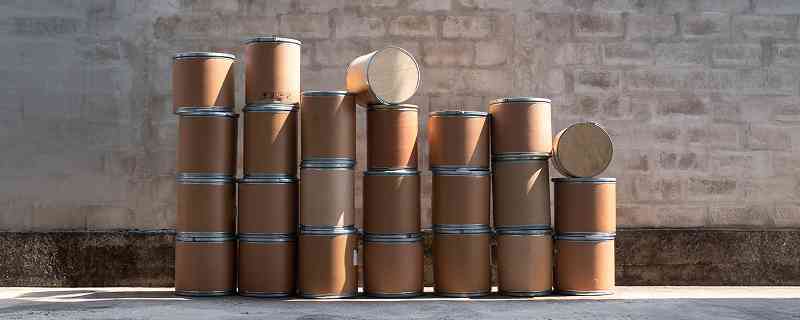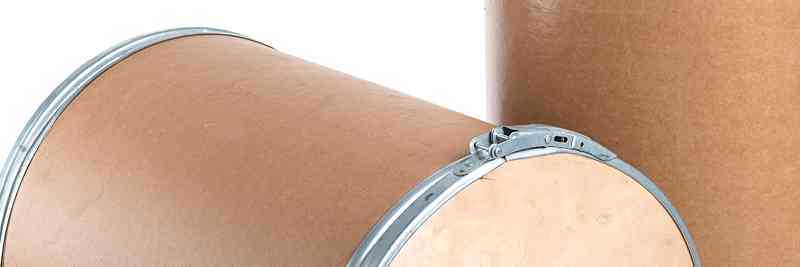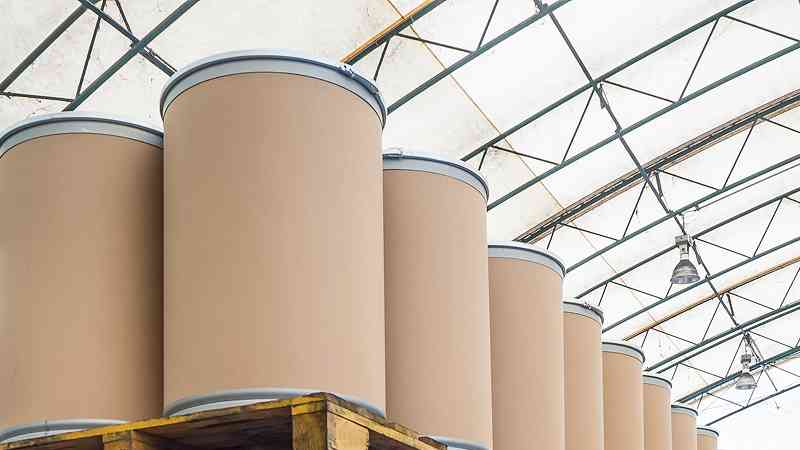What Are Fiber Drums Used For?
Lightweight, durable, and recyclable containers for industrial solids and powders.

Key Takeaways
- Store and ship dry goods, powders, and granules efficiently
- Common in food, pharma, chemical, agriculture, and manufacturing
- Support full open-top access, liners, and UN ratings for solids
- Available with fiber, plastic, or steel lids and lever-lock or bolt ring closures
Why Fiber Drums?
Fiber drums (cardboard barrels) are multi-wall fiberboard containers designed for dry, solid, or semi-solid materials. They balance low tare weight with high strength, simplify material handling (wide open top), and are recyclable at end of life. Add liners or coatings when moisture protection or cleanliness is required.

Common Industrial Uses
Food & Beverage
- Powders and dry ingredients: sugar, cocoa, spices, starches, protein powders
- Processing aids: stabilizers, flavorings, acidulants
- Notes: pair with food-grade liners; label for allergen control and traceability.
Pharmaceutical & Nutraceutical
- APIs, excipients, granulations, tablets/capsules in bulk
- Clean interiors and wide openings aid dispensing into process equipment
- Options: antistatic or high-barrier liners; UN 1G ratings for regulated solids when required.
Chemicals & Additives (Dry)
- Pigments, resins, catalysts, polymer pellets, adsorbents
- Benefits: corrosion-free vs. steel; easy labeling; compatible with foil/PE liners to control moisture and dust.

Agriculture & Animal Nutrition
- Seed, feed, premixes, supplements
- Sturdy for stacking/storage; liners help with humidity control during seasonal warehousing.
Adhesives, Coatings & Building Materials
- Powder coatings, cement additives, grout, hot-melt pellets, putties (with liners as needed)
- Open-head design speeds charging, scooping, or dumping.
Manufacturing, MRO & Logistics
- Metal parts, fasteners, plastic parts (smooth walls reduce abrasion)
- Kitting and WIP staging in plants; clear surface for barcodes and ID labels.
Recycling & EHS
- Hazardous or universal waste solids (sorbents, contaminated rags, debris)
- UN-rated fiber drums support compliant collection, storage, and transport of solid waste streams.
How They Support These Uses
Fiber drums work because their core design solves practical handling, safety, and compliance needs for dry materials.
- Access & throughput: Full open-top makes filling and emptying faster than tight-head formats.
- Closures: Lever-lock (most common) or bolt rings deliver secure, tamper-evident sealing.
- Lids: Fiber, plastic, or steel—chosen for stacking strength, cleanliness, or corrosion resistance.
- Liners & barriers: Poly or foil liners control moisture, dust, and cleanliness; enable food/pharma use.
- Ratings: Many models are UN-certified for solids (1G/Y or 1G/X); follow tested closure/liner instructions.

In short, the combination of open access, secure closures, and liner options is what makes fiber drums a practical fit across multiple industrial workflows.
Selection Checklist
Use this quick checklist to confirm fit before you commit to a specification.
- Material state: Dry powder/granule/solid? (Use a liner for moisture-sensitive goods.)
- Capacity & handling: 10, 20, 30, 55, up to ~75 gal; verify weight limits and stacking needs.
- Regulatory fit: UN rating for hazardous solids; food-grade liner for edible products.
- Closure & lid: Lever-lock vs. bolt ring; fiber vs. steel/plastic lid for stacking or metal-free needs.
- Environment: Keep drums dry; avoid unlined liquid storage.

If each item checks out, you’re likely selecting a drum that will perform reliably for your application.
Conclusion
Fiber drums (cardboard barrels) provide a dependable, low-tare solution for dry goods across food, pharma, chemical, agricultural, and manufacturing settings. Their open-head access, secure closures, liner compatibility, and optional UN ratings make them straightforward to integrate into existing processes. Match capacity, closure, lining, and certification to the material and environment, and they’ll deliver safe, efficient handling from receipt through storage and use.

